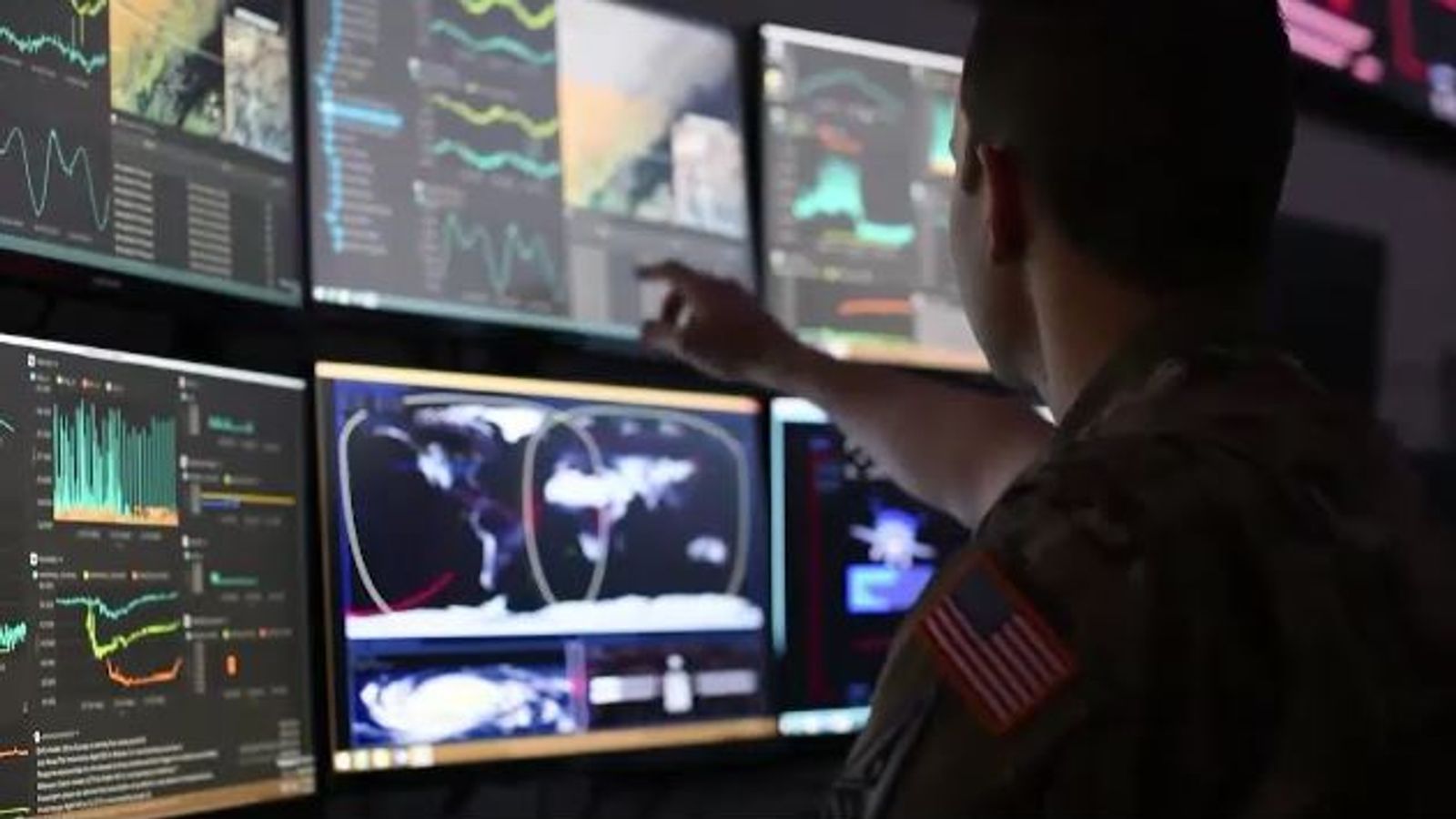The United States is looking to build a spy base in the UK to probe deep space and spot any attempt by states such as Russia or China to attack vital satellites orbiting the Earth.
Using radar technology that can identify an object the size of a football up to 22,000 miles (36,000 kilometres) away, the facility would also be able to scan for less sinister, but just as damaging, pieces of space debris that can also break satellites if they collide.
A US Space Force officer said that the concept is to build three radar bases around the globe, including one potentially in Scotland or in southern England.
The other two sites look set to be in the US state of Texas and in Australia. The aim is for the first base to be operational by 2025.
“It is necessary because we want to keep chain-of-custody of targets that could threaten our systems that are in geosynchronous orbit,” Lieutenant Colonel Jack Walker told Sky News.
“It could be satellites or it could just be debris from rocket bodies from other launches.”
He was speaking at the US Space And Missile Systems Center in Los Angeles during a visit by Ben Wallace, the UK defence secretary, and two British military chiefs.
Air Chief Marshal Sir Mike Wigston, the head of the Royal Air Force, offered a sense of the threats in space, with certain countries developing lasers that can be fired from the Earth at targets in orbit, or hostile satellites that are moved deliberately into the path of others.
“I would say that we need to prepare for the potential to defend our critical infrastructure in space,” he told Sky News.
“Right now, there are countries like Russia and China that are doing things, developing systems that are … a threat to satellites that we rely on in our day-to-day lives.”
For example the American Global Positioning System (GPS) constellation of 31 satellites provides critical navigation and time-tracking information to people, governments and companies across the planet.
Taking out satellites like these would impact mobile phones, banks and even the logistics chains that ensure medical supplies are at hospitals and food is in the supermarkets.
“I think most people in the population probably don’t understand their reliance on space in their day-to-day lives,” Air Chief Marshal Wigston said.
Mr Wallace, who is on a week-long visit to the United States, said the UK is focused on defending itself in space rather than developing space weapons to launch attacks like its adversaries.
But space is viewed as a war-fighting domain.
At a NATO summit in Brussels last month, Britain and its allies signalled that an attack in space could trigger a war on Earth.
“I don’t think there would be a standalone war in space,” the defence secretary said in an interview at the space centre.
“It wouldn’t be like Star Wars or Moonraker with lasers firing all over the place… I suspect in a major conflict, space assets would be targeted. So we have to invest and prepare today to make sure we have alternatives.”
Each circular site for the new US radar system – called the Deep Space Advanced Radar Capability (DARC) – would have a diameter of a kilometre and hold up to six, large antennae dishes – spanning 15 metres across – that would transmit energy into space.
The energy signal would then return to Earth and be recorded in a cluster of up to 10 same-sized dishes in a separate location nearby that are designed to receive the data.
“You have transmit-antennas and you have receive-antennas,” said Lt Col Walker, who works as the programme manager for advanced capabilities in the special programmes directorate of the US Space Force.
The UK already hosts a number of spy bases in partnership with the United States such as RAF Flyingdales on Snod Hill in the North York Moors.
That radar station can scan out to about 5,000 kilometres and provides an early warning system for incoming ballistic missiles.
Asked about the prospect of a deep space spy base in the UK, a spokesperson for the Ministry of Defence said: “This new radar capability has the potential to make space safer and more secure, helping to protect our satellite system by tracking and monitoring objects.
“We are exploring our potential partnership with the USA on DARC and discussions so far have been positive.”

